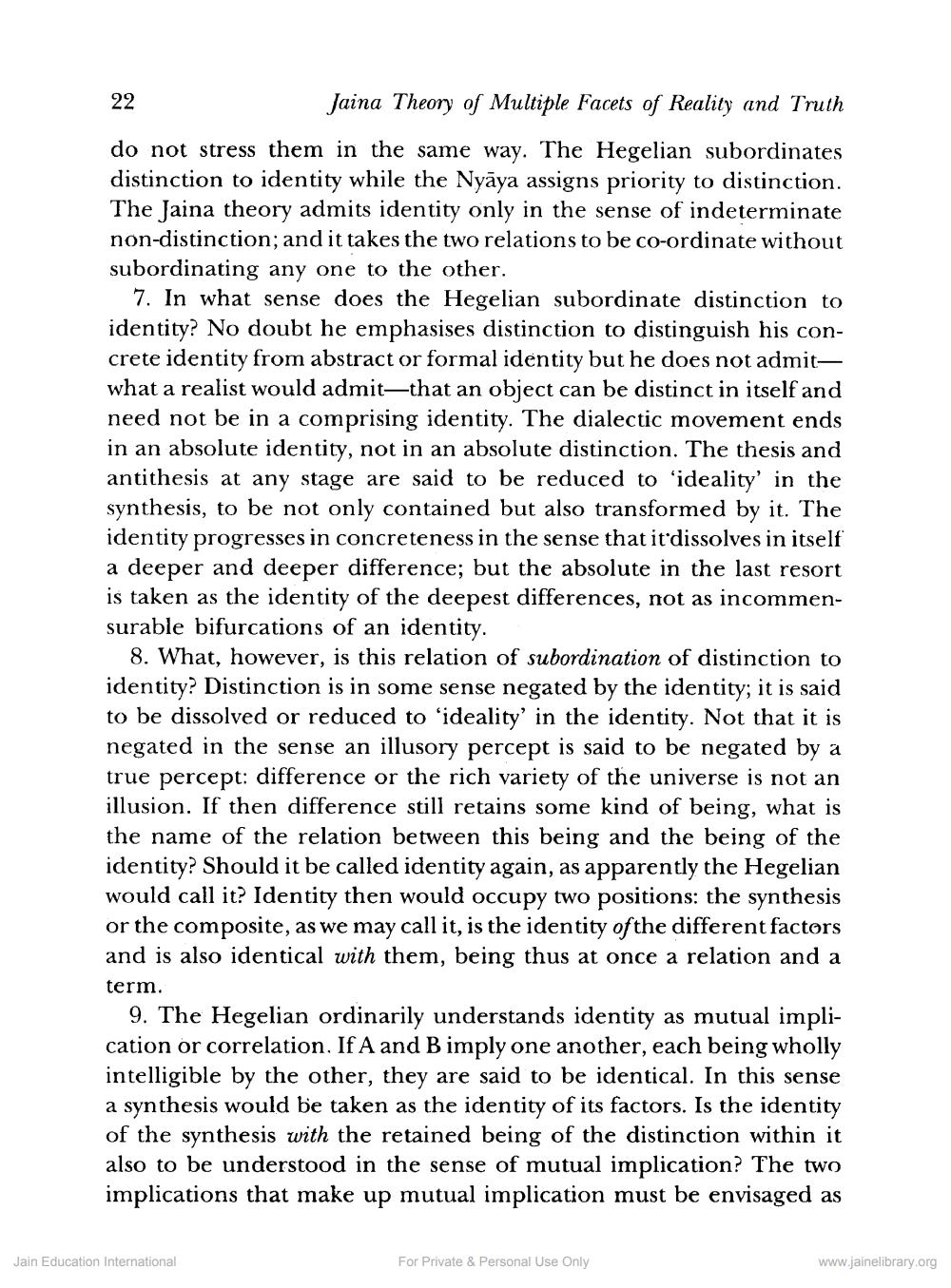________________
Jaina Theory of Multiple Facets of Reality and Truth
do not stress them in the same way. The Hegelian subordinates distinction to identity while the Nyaya assigns priority to distinction. The Jaina theory admits identity only in the sense of indeterminate non-distinction; and it takes the two relations to be co-ordinate without subordinating any one to the other.
7. In what sense does the Hegelian subordinate distinction to identity? No doubt he emphasises distinction to distinguish his concrete identity from abstract or formal identity but he does not admit— what a realist would admit-that an object can be distinct in itself and need not be in a comprising identity. The dialectic movement ends in an absolute identity, not in an absolute distinction. The thesis and antithesis at any stage are said to be reduced to 'ideality' in the synthesis, to be not only contained but also transformed by it. The identity progresses in concreteness in the sense that it dissolves in itself a deeper and deeper difference; but the absolute in the last resort is taken as the identity of the deepest differences, not as incommensurable bifurcations of an identity.
22
8. What, however, is this relation of subordination of distinction to identity? Distinction is in some sense negated by the identity; it is said to be dissolved or reduced to 'ideality' in the identity. Not that it is negated in the sense an illusory percept is said to be negated by a true percept: difference or the rich variety of the universe is not an illusion. If then difference still retains some kind of being, what is the name of the relation between this being and the being of the identity? Should it be called identity again, as apparently the Hegelian would call it? Identity then would occupy two positions: the synthesis or the composite, as we may call it, is the identity of the different factors and is also identical with them, being thus at once a relation and a
term.
9. The Hegelian ordinarily understands identity as mutual implication or correlation. If A and B imply one another, each being wholly intelligible by the other, they are said to be identical. In this sense a synthesis would be taken as the identity of its factors. Is the identity of the synthesis with the retained being of the distinction within it also to be understood in the sense of mutual implication? The two implications that make up mutual implication must be envisaged as
Jain Education International
For Private & Personal Use Only
www.jainelibrary.org




